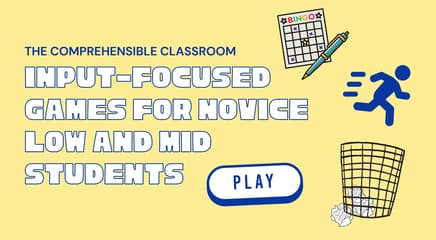This activity has several inspirations:
- Sarah Camblin, the French teacher at my school--her students are using this format to write about the frequency with which they do different activities in each season.
- Michele/Jenny and the story about waking up on the wrong side of the bed.
- The book "Alexander y el día terrible, horrible, espantoso, horroroso" (Alexander and the No Good, Very Bad, etc.etc. day...I forget the whole title in English)
I wrote this up super-fast this morning when I realized a few minutes before first period that 8th grade testing meant that my 6th and 7th grade classes (on the 8th grade floor) would need to be SILENT today. Yikes! We did not tell the wrong side of the bed story before the students began writing, but the two activities would go wonderfully together. Basically, my students will be writing a three-paragraph story that includes an accordion paragraph (part of our ASD middle-level curriculum through Step Up to Writing). Their story will have the following structure:
- Introduction: Introduce and describe the main character
- Accordion Paragraph: (1) "Name of character has a lot of problems". (2) Explain first problem. (3) Explain something that happens as a result of the first problem. (4) Explain second problem. (5) Explain something that happens as a result of the second problem. (6) Explain third problem. (7) Explain something that happens as a result of the third problem. (8) Concluding sentence--Explain how character feels as a result of all of these problems.
- Conclusion: A happy or sad end to the story.
Today, my students began pre-writing using this worksheet: El día terrible, horrible, espantoso, horroroso planning paper
I included my fourth quarter writing rubric for Spanish A, and they will use it as a tool to edit their work before they submit their final copy that will be assessed as formal writing for the quarter.
Before they began completing the worksheet, we brainstormed IN ENGLISH a list of potential problems that someone could have on a bad day that the students know how to say in Spanish. This kept them from wanting to run to the dictionaries every 30 seconds to look up things like "dislocates her right pinky toe". Our list looked something like this:
- doesn't have (a pencil, a dog, etc.)
- can't find (his glasses, her brother, etc.)
- is scared of (boys, mice, etc.)
- has to (eat spinach, do homework, etc.)
- someone yells at him/her
- someone talks trash about him/her
- etc. etc. etc.




